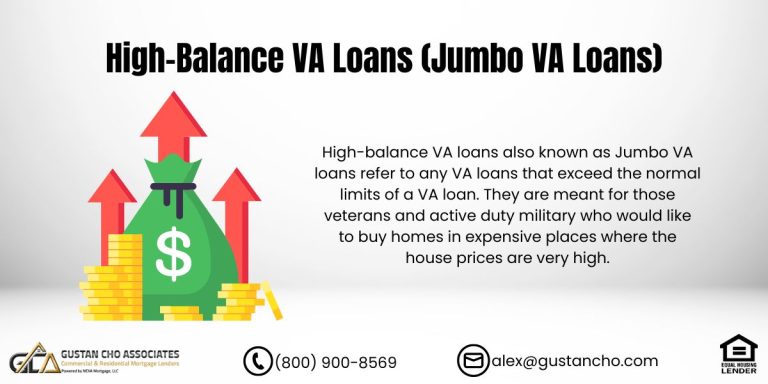In this blog, we will cover and discuss qualifying for FHA jumbo loans while in the Chapter 13 Bankruptcy repayment plan. FHA jumbo loans are also called FHA high-balance loans. HUD, the parent of HUD, is the federal agency that sets the maximum FHA loan limits in standard and high-cost areas throughout the United States. The maximum FHA loan limit for 2022 in standard areas is capped at $420,680. The maximum FHA loan limit in high-balance areas for 2022 is capped at $970,800.
What Is Considered a High-Cost Area?
The Federal Housing Finance Agency defines high-cost areas as counties in the United States where 115% of the local median home value exceeds $647,200. Many counties throughout the nation have higher home prices than the rest of the U.S. To avoid pricing out of the housing market in high-cost areas, the FHFA and HUD have set higher loan limits in high-cost areas. The maximum FHA and conforming loan limits in high-cost areas are capped at $970,800 on single-family homes. Many counties in California, Oregon, and Washington are classified as high-cost areas where home buyers can qualify for FHA and conforming jumbo loans.
Are FHA Jumbo Loans Harder To Qualify?
FHA jumbo loans are not harder to qualify than standard FHA loans. However, it is up to each individual mortgage lender to set mortgage guidelines on FHA jumbo loans. HUD does not have any higher lending guidelines on FHA jumbo loans versus standard FHA loans with regard to credit scores, loan to value, debt to income ratio, down payment requirements, and other guidelines. The only major difference between FHA standard and FHA jumbo loans is pricing on rates. FHA jumbo loans have loan level pricing adjustments due to the layered risks FHA high-balance loans have due to the large loan amount. Homebuyers can qualify for FHA jumbo loans while in the Chapter 13 Bankruptcy repayment plan with Bankruptcy Trustee approval one year into the Chapter 13 repayment plan.
Does FHA Allow Jumbo Loans?
Jumbo FHA Loans are also commonly referred to as high-balance FHA loans in high-cost counties. FHA jumbo loans are any FHA loan that surpasses the maximum standard FHA loan limit in standard median-priced areas. 2022’s FHA loan limit in standard median-priced counties throughout the United States is capped at $420,680. Any FHA loans surpassing the standard FHA loan limit are called FHA jumbo loans or FHA high-balance mortgages. The ceiling on FHA jumbo loans in high-cost areas for 2022 is $970,800 for single-family homes.
<h2Why Do Lenders Deny FHA Jumbo Loans While in The Chapter 13 Bankruptcy?
Many mortgage borrowers have been told they cannot qualify for FHA jumbo loans while in the Chapter 13 Bankruptcy repayment plan. Many have been told they need to wait 2 years after the Chapter 13 discharge date. This is not correct. Per HUD Chapter 13 Guidelines, borrowers can qualify for both purchases and refinance FHA jumbo loans during the Chapter 13 Bankruptcy repayment plan in high-cost areas without the Chapter 13 being discharged. The bankruptcy trustee needs to approve the transaction. Most trustees will approve a home purchase and/or refinance transaction during the Chapter 13 Repayment plan.
Why Do Lenders Refuse FHA Jumbo Loans During The Chapter 13 Bankruptcy Repayment Plan?
Why do lenders refuse to accept borrowers during the Chapter 13 repayment plan? Why do lenders turn away borrowers after Chapter 13 discharge? The answer is due to lender overlays. We will discuss what lender overlays are versus HUD Chapter 13 Guidelines on FHA Loans in this article. In this article, we will cover and discuss HUD Chapter 13 Guidelines And Requirements On FHA Home Loans.
What Is an FHA Overlay?
FHA Overlays are additional mortgage guidelines that go beyond the minimum agency mortgage guidelines issued by the U.S. Department of Housing and Urban Development (HUD) on FHA loans. HUD is the parent of FHA and sets the minimum agency mortgage guidelines. However, each lender can have an FHA overlay which are higher lending requirements beyond HUD on FHA loans.
Lender Overlays Versus HUD Chapter 13 Guidelines
What are lender overlays? Lender overlays are additional mortgage guidelines that are above and beyond the minimum HUD Agency Guidelines on FHA Loans. All mortgage lenders need to be HUD Approved. All HUD Approved Lenders need to meet the minimum FHA Guidelines. However, lenders can have higher lending requirements that are beyond the minimum HUD Guidelines. Mortgage companies can impose lender overlays on basically anything. In the next paragraph, we will discuss examples of lender overlays versus FHA Lending Guidelines.
Typical Overlays Imposed By Mortgage Companies
We will cover and discuss the typical Lender Overlays versus HUD Agency Guidelines. HUD requires a minimum 580 FICO for a 3.5% down payment FHA loan. Most lenders require a 620 FICO or higher even though HUD only requires 580. FHA does not require borrowers to pay outstanding collections and charged-off accounts. Mortgage companies can require borrowers to pay outstanding derogatory tradelines. HUD allows up to 46.9% front end and 56.9% back end debt to income ratio to get an approve/eligible per automated underwriting system (AUS).
Lender Overlays on Debt-to-Income Ratios on FHA Loans
Most mortgage companies will cap debt to income ratios at 45% to 50% DTI as part of their overlays. HUD allows borrowers to qualify for FHA loans during Chapter 13 repayment with Trustee Approval and no waiting period after the Chapter 13 discharge date. Most lenders do not allow borrowers during Chapter 13 repayment to qualify unless the borrower has their bankruptcy discharged and seasoned for two years.
FHA Waiting Period Requirements During and After Chapter 13 Bankruptcy
There is no waiting period after the Chapter 13 discharge date but lenders may require a one to two-year waiting period after the discharge date. The minimum credit score to qualify for FHA Loans is 500 FICO with a 10% down payment. Most lenders will not allow borrowers with 580 credit scores. There are countless lender overlays mortgage companies can impose. Gustan Cho Associates are one of the very few national lenders that has no overlays on government and conventional loans.
HUD Manual Underwriting Guidelines

Manual Underwriting is only allowed with FHA and VA Loans. Not all lenders entertain manual underwriting. A large percentage of our borrowers at Gustan Cho Associates are manual underwrites. All FHA jumbo loans while in the Chapter 13 Bankruptcy repayment plan is manual underwriting. Anyone who has Chapter 13 discharged but the discharged date is less than 2 years, the file needs to be a manual underwrite. A large percentage of our borrowers at Gustan Cho Associates are manual underwriting. We are experts in originating FHA and VA manual underwriting files.
HUD Chapter 13 Guidelines on Jumbo FHA Loans
Below are the HUD Chapter 13 Guidelines And Requirements on FHA jumbo loans. Borrowers can qualify for FHA jumbo loans while in the Chapter 13 repayment plan. Mortgage borrowers who need to qualify for FHA jumbo loans while in the Chapter 13 Bankruptcy repayment plan, need to have made 12 timely payments to the Bankruptcy Courts in order to qualify for FHA jumbo loans. The bankruptcy does not have to discharge. Trustee approval is required. Needs to be manually underwritten. Most trustees will allow and sign off on a home purchase and/or refinance during Chapter 13 repayment.
FHA Jumbo Loans After Chapter 13 Bankruptcy Discharge
There is no waiting period after the Chapter 13 discharge date. Any Chapter 13 without a two-year seasoning needs to be manually underwritten. Verification of rent is required on manual underwrites. Gustan Cho Associates will exempt borrowers without verification of rent to qualify for manual underwriting if they are living with a family rent-free. Debt to income ratios depends on compensating factors. In the next paragraph, we will cover and discuss the importance of compensating factors for manual underwriting borrowers with high debt-to-income ratios.
The Importance of Compensating Factors on Manual Underwriting
Here are the debt-to-income ratio requirements on manual underwriting files:
- The maximum DTI with no compensating factors is 31% front end and 43% back end
- Debt to income ratios is 37% front end and 47% back end with two compensating factors
- DTI is capped at 40% front end and 50% back end with two compensating factors
Compensating Factors are positive factors lenders take into consideration to offset the risk factors of borrowers.
What Are Acceptable Compensating Factors on FHA Jumbo Loans
Below are examples of compensating factors:
- Low payment shock of 5% or less from renting to new housing payment
- History of savings by borrowers
- Three or more months in reserves
- The borrower has a second job that has been seasoned for at least 12 or more months that is not used as qualified income
- Putting a more down payment on a home purchase than the minimum required
With additional compensating factors, mortgage underwriters can go beyond 50% debt to income ratios on manual underwrites. Mortgage underwriters have a lot of underwriter discretion on FHA jumbo loans on manual underwriting. If you are looking to get qualified for FHA Jumbo Loans while in the Chapter 13 Bankruptcy, feel free to contact us at Gustan Cho Associates at gcho@gustancho.com or call us at 800-900-8569. Or text us for a faster response. The team at Gustan Cho Associates are experts in originating FHA jumbo loans while in the Chapter 13 Bankruptcy. We can help homebuyers and homeowners qualify for FHA jumbo loans while in the Chapter Bankruptcy and also after Chapter 13 discharge.









